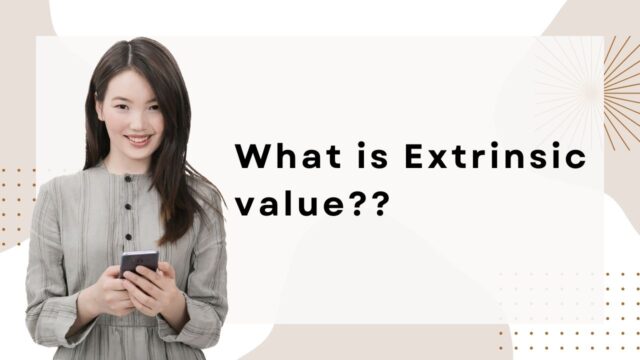
What is extrinsic value
Extrinsic value is the value of something that is not part of the thing itself. For example, the value of a stock options contract is extrinsic to the stock. The most common use of the value is in reference to options contracts. Options are derivative securities, meaning their price is based on the price of something else. The underlying security can be a stock, index, commodity, or currency. The price of the option is determined by factors such as the price of the underlying security, time until expiration, and volatility. Most options have this when they are first created, because their price is influenced by factors that are not part of the option itself. Time decay and changes in volatility can cause it to decline over time. If an option expires with no intrinsic value remaining, it is said to have expired worthless.
How to calculate extrinsic value
To calculate the extrinsic value, you first need to determine the intrinsic value. The intrinsic value is the portion of the asset’s price that is due to factors within the asset itself, such as its earnings potential or its physical properties. Once you have determined the intrinsic value, you can subtract it from the asset’s current market price to arrive at the extrinsic value. For example, if an asset has a current market price of $100 and an intrinsic value of $50, then its extrinsic value would be $50. It can be positive or negative, depending on whether it is trading above or below its intrinsic value. While the intrinsic value is a static number, it is constantly changing as market conditions fluctuate. As a result, calculating the this can give you valuable insights into whether an asset is currently under- or overvalued.
Examples of extrinsic value
There are many examples of extrinsic value. Perhaps the most obvious is money, which is used to exchange goods and services. Other forms of the value include stocks, bonds, and other financial instruments. More tangibly, land can also be considered to have this – it can be used for farming, grazing, or simply to build homes and other structures on. In some cases, even objects that have no practical use can hold it – for example, artworks or antiques. Ultimately, anything that can be exchanged for something else of value can be said to have extrinsic value.
Advantages and disadvantages of extrinsic value
There are both advantages and disadvantages to things having this value. One advantage is that it can make things more affordable. If something has intrinsic value, then only people who can afford to pay for that intrinsic value will be able to purchase it. However, if something has extrinsic value, then people who may not be able to afford the intrinsic value can still purchase it if they are willing to pay for it. For example, someone who cannot afford a painting by a famous artist may be able to purchase a print of that painting for less money.
A disadvantage of extrinsic is that it can be artificially created or manipulated. For example, some people may try to create extrinsic value by creating fake historic stories about an object in order to make it seem more valuable.
How to increase extrinsic value
There are a number of things you can do to increase the value of your property. One way is to make sure that it is well-maintained. This means keeping the lawn trimmed, the gutters clean, and the exterior of the house in good repair. Another way to increase this is to make sure that your property is attractively landscaped. This means planting flowers and shrubs, and making sure that they are well-groomed. Finally, you can also increase it by installing features that will improve the curb appeal of your property, such as a new mailbox or a decorative fence. By taking these steps, you can increase the extrinsic value of your property and make it more appealing to potential buyers.
Extrinsic value in business
The concept of this is important in business. This is the value that a company or product has in addition to its inherent value. In other words, it is the value that is placed on something by an external factor. For example, a company may be worth $1 million intrinsic value, but if it has a good reputation, this could add $10 million to its extrinsic value, making it worth $11 million to potential investors. It can also come from things like patents, copyrights, and trademarks. These can add a significant amount of value to a company, and they are things that are often taken into consideration when valuing a business. Therefore, it is important to understand the concept when valuating a business.
Extrinsic value risk
Investors commonly face two different types of risk when making investment decisions – intrinsic and extrinsic value risk. Intrinsic value risk is associated with the underlying security itself, while extrinsic risk is a result of the market conditions surrounding the security. Many investors focus primarily on intrinsic value risk when making investment decisions, but it is important to understand both types of risk in order to make sound investment choices.
Risk can be further divided into two categories – price risk and interest rate risk. Price risk is the risk that the market price of a security will move in a direction that is unfavorable to the investor. Interest rate risk is the risk that changes in interest rates will have a negative impact on the price of a security. Both of these risks can have a significant impact on an investor’s portfolio, so it is important to be aware of them when making investment decisions.


































